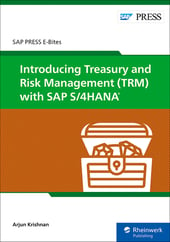Welcome to the exciting world of treasury. In this post, I would like to talk about the increasing importance of the treasury function, the impact of the incredible advances in technology on the business of treasury, and how technology can better enable the managing of the complex and dynamic requirements of corporate treasury in the 21st century.
Challenges Facing the Treasury
In the context of what I listed above, what are the essential features required of a good treasury management system, often referred to as TMS? Although my expertise is in SAP Enterprise Resource Planning-based TMS, my purpose here is to be system agnostic and focus on the functional and business benefits of technology for treasury practitioners, and how these can be leveraged in TMS. The treasury function has grown exponentially in importance and is increasingly playing a key role in the financial success of an organization.
More often than not, the treasurer of a corporation has a seat at the executive table and their expertise and input is sought on key corporate decisions that affect the financial future of the corporation: crucial and critical corporate functions, particularly in the areas of cash and liquidity management; financial risk management; custodial functions; and investment and debt management and governance, to name a few. It would be an understatement to say that we live in very challenging times with disruption being the norm not only in our daily lives, but also in the way we do business. Additionally, this disruption affects us as consumers, with the way we shop, buy, and consume.
Opportunities to Take Advantage Of
These challenges also provide us with a great opportunity, being driven by the incredible advances in technology that have been taking place over the past few years, now accelerated by the pandemic. Key questions that corporations and treasurers, in particular, are facing are how to manage financial risk in a very volatile and uncertain environment, and what hedging strategies could be implemented against inflation, devaluation of currency, and interest rate volatility.
New forms of investment like cryptocurrency are challenging the traditional, risk-averse go-to assets like gold bonds and cash, and decisions need to be made around the composition of investment portfolios, debt issuance, optimization of working capital, and funding the internal and external needs of the business. Which brings me to a key question: how can technology help the treasury function to manage these complex and dynamic requirements from a strategic perspective, as well as manage day to day operational tasks?
First, let's look at the impact of technology on TMS and how we got to where we are today. The period from 2010 onwards saw some major technological advances. Firstly, rapid improvements in processing power, using commodity servers, parallel processing, and new architectures have taken place, resulting in the ability to process massive amounts of data in real time, at a fraction of the previous cost.
Second, with the rise of big data and advanced analytics, huge amounts of structured, semi-structured, and unstructured data are now available to companies through social media; external and internal sources could now be mined to provide real-time predictive, prescriptive intelligence in the area of consumer behavior; marketing; and now, increasingly, in finance and treasury. All of an organization's data, both historic and current, can now be held in a single virtual database, allowing all the tools that harnessed big data to be applied to corporate data.
Third, business users now expect consumer-grade characteristics when accessing enterprise data, the same kind they experience when they use the consumer-based applications they interact with on a daily basis on the internet. The tools to enable this have been improving steadily, and a customer-centric user experience is of paramount importance.
Fourth, the advent of cloud-based computing has allowed a cost effective alternative for organizations with respect to treasury systems deployment, options that include on-premise traditional licensing to less expensive and lower maintenance, private or public subscription-based cloud implementations, or a hybrid of the two. This will allow more medium and small companies to leverage the benefits of integrated enterprise wide systems, so the total cost of ownership decreases and the value proposition increases.
Finally, the increasing digitalization of the enterprise through the application of advanced technologies like artificial intelligence, deep learning, robotics, advanced analytics, to software development, automating processing of repetitive tasks, fraud prevention and detection, working capital optimization (to name a few), augurs well for the treasury function.
The Ideal TMS
So in the context of all of the above and the possibilities that are limited only by our imagination, what should we be looking for in an ideal TMS? Here are some of the general features that I believe a good TMS system should provide.
Integrity of Data
This relates to one source of truth, and integrates with the book of prime record, preferably through automated generation of accounting entries and self reconciliation. The more often data is recycled, reimported or copied, the higher the chance of error or manipulation.
Ability for Straight-Through Processing
This refers to processing routine and repetitive tasks that will free up the treasury practitioner for exception-based intervention and high value added activities. For example, bank reconciliation and matching and clearing activities are routine tasks that can be automated.
Integration Across Financial Supply Chain
This refers to a high level of automation of treasury processes. For example, the linking of exposure management with hedge management and trade execution through a frontend trading platform, with trades being recorded automatically in the TMS for further processing of matching payment, settlement accounting, and final termination can occur as a seamless process with a very high degree of automation.
Real-Time Analytics
This refers to the ability to analyze data in real time, using advanced analytical tools for predictive, prescriptive, and preventative analysis; outlier detection; as well as routine recording of daily activity. For example, a study a few years ago indicated that corporations globally held over $1.6 trillion in excess working capital that could be released to pay down debt, fund investments and improve free cash flow. We now have the tools to take proactive action to optimize working capital and in other areas of finance and treasury.
Integrated Controls
Treasury payments and transactions typically tend to be high value and low volume. And, in nature, integrated controls and approval mechanisms through workflow and systemic controls tend to be available to ensure authorized transaction processing as well as preventing and detecting fraud and error.
Seamless Integration
This refers to integration both within internal systems, as well as external ones like banks, counterparty market data providers, and the myriad of external parties that treasury typically interacts with on a day to day basis.
End-User Control
This refers to the ability to provide more end-user control over the functionality provided by the TMS, and the ability to tailor it to meet the functional, operational and analytical needs of treasury practitioners and business users.
Conclusion
In this post, I took a look at the treasury function of an enterprise resource planning software and how the ideal TMS should look. For those using or interested in SAP as the solution for your business, I wrote an E-Bite that discusses how TRM is handled with the new SAP S/4HANA Finance suite. If you found this post to be informative, you can learn even more about TMS by checking out the E-Bite here.
View This Post in Video Format:




Comments